Most influential women in British science history
We asked a panel of experts – all leading female scientists or science historians – to vote for the ten women in British history who have had the most influence on science to celebrate the Society’s 350th anniversary in 2010. The panel comprised Professors Lorna Casselton, Athene Donald, Uta Frith and Julia Higgins, all Fellows of the Royal Society, and Dr Patricia Fara, an eminent historian of science.
Caroline Herschel (1750-1848)
Caroline Herschel was born in 1750 in Hannover, Germany, but moved to England with her brother, the astronomer William Herschel, in 1772. She became William’s general assistant and helped him by writing down his observations and helping him produce reflective telescopes. Caroline occupied herself with astronomical theory and mastered algebra and formulae for calculation and conversion as a basis for observing the stars and managing astronomical distances. Caroline joined her brother when he was appointed royal astronomer at the court at Windsor and served him as his scientific assistant. This gave her a salary of 50 pounds per year, the first salary that a woman had ever received for scientific work. Between 1786 and 1797 she discovered eight comets, as well as discovering fourteen nebulae, began a catalogue for star clusters and nebulae patches, and compiled a supplemental catalogue to Flamsteeds Atlas which included 561 stars with a comprehensive index.
Caroline returned to Hanover after her brother’s death where the world’s most important scientists sought her expertise. She was awarded numerous honours, being awarded the 1828 gold medal of the Royal Astronomical Society, of which she became an honorary member in 1835. At the age of 96 she was awarded the gold medal of the Prussian Academy of Sciences in 1846.
Mary Somerville (1780-1872)
Mary Somerville's first scientific investigations began in the summer of 1825, when she carried out experiments on magnetism. In 1826 she presented her paper entitled "The Magnetic Properties of the Violet Rays of the Solar Spectrum" to the Royal Society. The paper attracted favorable notice and, aside from the astronomical observations of Caroline Herschel, was the first paper by a woman to be read to the Royal Society and published in its Philosophical Transactions.
In 1827 Lord Brougham, on behalf of the Society for the Diffusion of Useful Knowledge, began correspondence with Mary, to persuade her to write a popularized rendition of Laplace's Mecanique Céleste and Newton's Principia. He hoped that she could reach a larger audience by communicating the concepts clearly through simple illustrations and experiments that most people could understand. Unsure of her qualifications, Mary undertook the project in secrecy, assured that, if she should fail, the manuscript would be destroyed and only those immediately involved would ever need to know. The Mechanism of the Heavens was a great success, probably the most famous of her mathematical writings. In recognition, a portrait bust of her was commissioned by her admirers in the Royal Society.
While in Europe in 1832-1833, she largely completed her second book, which was published in 1834. With The Connection of the Physical Sciences, which was an account of physical phenomena and the connections among the physical sciences, came new scientific distinctions. She and Caroline Herschel were elected to the Royal Astronomical Society in 1835, the first women to receive such an honour.
In 1848, at the age of sixty eight, Mary published yet another book. Physical Geography proved to be her most successful work yet and was widely used in schools and universities for the next fifty years.
Her last scientific book, Molecular and Microscopic Science was published in 1869, when Mary was eighty-nine.
Mary Anning (1799-1847)
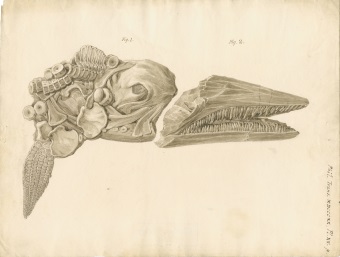
Fossil skull and jaws of the Proteosaurus (Ichthyosaur) © The Royal Society
Mary Anning was an early British fossil collector and paleontologist. She spent her life working in Lyme Regis. Her skill in locating and preparing fossils, as well as the richness of the Jurassic era marine fossil beds at Lyme Regis, resulted in her making a number of important finds. These included the skeleton of the first ichthyosaur to be recognised and the first two plesiosaur skeletons ever found, the first pterosaur skeleton found outside of Germany, and some important fossil fish. Her observations also played a key role in the discovery that coprolites, known as bezoar stones at the time, were fossilized faeces.
Anning's gender and social class prevented her from fully participating in the scientific community of early 19th century Britain, and she did not always receive full credit for her contributions. Despite this she became well known in geological circles in Britain and beyond, although she struggled financially for much of her life. After her death her enormous contribution to paleontology was largely forgotten.
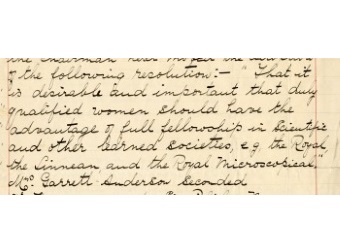
Women's Agricultural Times report from the first annual meeting (1899) of the Lady Warwick Agricultural Association for Women, containing a resolution stating that qualified women should be eligible for election to learned societies. Catalogue reference: CD/95/1
Elizabeth Garrett Anderson (1836-1917)
Elizabeth Garrett Anderson was a pioneering physician and political campaigner. She was the first Englishwoman to qualify as a doctor.
Female physicians were unheard of in 19th century Britain and her attempts to study at a number of medical schools were denied. In 1865 she passed the Society of Apothecaries examinations and gained a certificate which enabled her to become a doctor. The society then changed its rules to prevent other women entering the profession this way.
In 1866 she established a dispensary for women in London and in 1870 was made a visiting physician to the East London Hospital. Despite obtaining a medical degree from the University of Paris, the British Medical Register refused to recognise her qualification. In 1872, Anderson founded the New Hospital for Women in London (later renamed after its founder), staffed entirely by women.
Anderson's determination paved the way for other women, and in 1876 an act was passed permitting women to enter the medical professions. In 1883, Anderson was appointed dean of the London School of Medicine for Women, which she had helped to found in 1874, and oversaw its expansion.
In 1902, Anderson retired to Aldeburgh on the Suffolk coast. In 1908, she became the mayor of the town, the first female mayor in England. She was also a member of the suffragette movement and her daughter Louisa was a prominent suffragette.
Hertha Ayrton (1854-1923)
Hertha Ayrton (née Marks) attended Girton College, Cambridge University where she studied Mathematics and received a B.Sc. degree from the University of London.
After University she worked as a private mathematics tutor for a time. She began her scientific studies by attending classes in physics at Finsbury Technical College given by Professor William Ayrton, whom she married in 1885.
Ayrton assisted her husband with his experiments in physics and electricity, becoming an expert on the subject of the electric arc and published several papers from her own research in the Proceedings of the Royal Society of London and The Electrician. She published her widely acclaimed work The Electric Arc in 1902.
Ayrton was elected the first female member of the Institution of Electrical Engineers in 1899. In 1902 she became the first woman nominated a Fellow of the Royal Society of London, although because she was married she could not be elected to this distinction.
In 1904 Ayrton became the first woman to read her own paper before the Royal Society on ‘The origin and growth of ripple-mark’. She received the Royal Society’s Hughes Medal for her investigations in 1906.
Kathleen Lonsdale FRS (1903-1971)
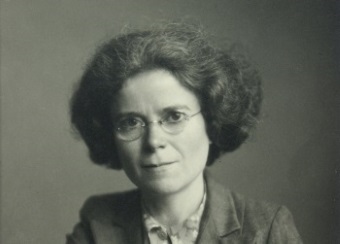
Portrait of Kathleen Lonsdale by Walter Stoneman ©Godfrey Argent Studio
Kathleen Lonsdale was an early pioneer of X-ray crystallography, a field primarily concerned with studying the shapes of organic and inorganic molecules.
In 1945, Lonsdale was the first woman, along with microbiologist Marjory Stephenson, admitted as a Fellow to the Royal Society. She was the first female professor at University College, London, the first woman named president of the International Union of Crystallography, and the first woman to hold the post of president of the British Association for the Advancement of Science. She accepted her achievements as a pioneering woman scientist with characteristic humility. In 1966, the "lonsdaleite, " a rare form of meteoric diamond, was named for her.
Lonsdale was born January 28, 1903 in Newbridge, Ireland, but grew up in England and won a scholarship to attend County High School for Girls in Ilford. At the age of 16, she enrolled in Bedford College for Women in London, where in 1922 she received a B.S. in mathematics and physics. William Henry Bragg, the 1915 Nobel Laureate in Physics, was so impressed with her academic performance that he invited her to work with him and a team of scientists using X-ray technology to explore the crystal structure of organic compounds. Londsdale worked with Bragg intermittently until his death in 1942.
Lonsdale and her husband, Thomas Jackson Lonsdale were committed pacifists. They worked toward world peace, as well as prison reform. During World War II, she and her husband gave shelter to refugees, and in 1943 Lonsdale spent a month in jail for refusing to register for war duties and then refusing to pay a fine of two pounds. In 1956, she wrote a book in reaction to extensive nuclear testing by the United States, the Soviet Union, and Great Britain entitled Is Peace Possible?
In 1956, Lonsdale was named a Dame Commander of the Order of the British Empire, and in 1957 she received the Davy Medal of the Royal Society. In 1966, she became the first female president of the International Union of Crystallography, and in 1968 the first woman to hold the post of President of the British Association for the Advancement of Science.
Elsie Widdowson FRS (1908-2000)
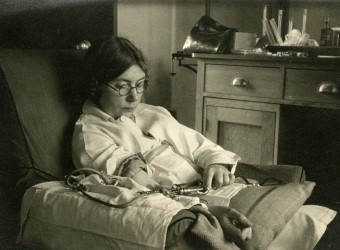
Portrait of Elsie Widdowson by unknown artist ©The Royal Society
Elsie Widdowson grew up during the First World War in London. She studied Chemistry at Imperial College London and took the BSc examination after two years. As a graduate she worked with Helen Archbold (later Helen Porter FRS) who steered her into one of the most remarkable scientific careers of the century. She took doctorates at Imperial College and at the Courtauld Institute of Biochemistry, becoming a Fellow of the Royal Society in 1976 and in 1993 a Companion of Honour.
Widdowson specialised in the scientific analysis of food, nutrition and the relationship between diet before and after birth and its effects on development. She entered into a 60-year partnership with Professor RA McCance in 1933. Their joint recognition that contemporary nutritional tables were substantially wrong cemented a highly creative partnership, which revolutionised the way the world assessed nutritional values, how it investigated problems of dietary deficiencies and how mammalian development was perceived.
Famously, Widdowson became involved in nutritional problems faced in Britain during the Second World War, particularly experimenting with minimal diets. Over long periods of self-deprivation McCane and Widdowson showed that health could be maintained on a diet so small that others believed starvation would be inevitable. She was also consulted on the careful dietary policy needed to remedy the effects of gross starvation suffered by Nazi concentration camp victims and later investigated the effects of different types of bread on the recovery rates of malnourished children in the general population of Germany.
Widdowson spent most of her working life in Cambridge, at the Medical Research Council Unit of Experimental (later Investigative) Medicine and at the Dunn Nutrition Unit.
Dorothy Hodgkin FRS (1910-1994)
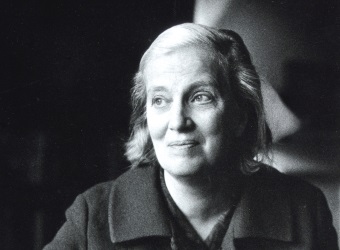
Dorothy Hodgkin by Godfrey Argent ©Godfrey Argent Studio
Dorothy Hodgkin (née Crowfoot) read for a degree in chemistry at Somerville College, University of Oxford in 1928. In 1932 she moved to the University of Cambridge to carry out doctoral research. In physicist John Desmond Bernal’s laboratory, she extended his work on biological molecules, including sterols (the subject of her thesis), and helped him to make the first X-ray diffraction studies of pepsin, a crystalline protein. She returned to Oxford in 1934 where she remained until her retirement in 1977. Crowfoot established an X-ray laboratory in a corner of the Oxford University Museum of Natural History and almost immediately began work taking X-ray photographs of insulin.
In 1939 when Australian pathologist Howard Florey and his colleagues at Oxford succeeded in isolating penicillin, they asked Hodgkin to solve its structure. By 1945 she had succeeded, describing the arrangement of its atoms in three dimensions. Hodgkin’s work on penicillin was recognized by her election to the Royal Society, in 1947, only two years after a woman had been elected for the first time. In the mid-1950s, Hodgkin discovered the structure of vitamin B12.
Nominated more than once for the Nobel Prize, she won in 1964 for her work on penicillin and vitamin B12. The following year she was made a member of the Order of Merit, in recognition of her contribution to science.
Hodgkin devoted much of the latter part of her life to the cause of scientists in developing countries, especially China and India, and to improved East-West relations and disarmament. From 1975 to 1988 she was president of the Pugwash Conferences on Science and World Affairs.
Rosalind Franklin (1920-1958)
Rosalind Elsie Franklin was a British biophysicist, physicist, chemist, biologist and X-ray crystallographer who made contributions to the understanding of the fine molecular structures of DNA, RNA, viruses, coal and graphite. She went to Newnham College, Cambridge in 1938 and passed her finals in 1941, but was only awarded a degree titular as women were not entitled to degrees at that time. She received a PhD from Ohio University in 1945.
Franklin is best known for her work on the X-ray diffraction images of DNA. Her data was a part of the data used to formulate Crick and Watson's 1953 hypothesis regarding the structure of DNA. Unpublished drafts of her papers show that she had determined the overall B-form of the DNA helix. Her work supported the hypothesis of Watson and Crick and was published third in the series of three DNA Nature articles. After finishing her portion of the DNA work, Franklin led pioneering work on the tobacco mosaic and polio viruses. Franklin died from ovarian cancer at the age of 37, four years before Crick, Watson and Wilkins were awarded the Nobel Prize in 1962 for their work on DNA. Franklin was unable to receive the prize as Nobel Prizes cannot be awarded posthumously, but she received no mention in the acceptance speeches. Although Franklin’s contribution to the ‘discovery’ of DNA is now widely recognised, there remains a lingering sense that her contribution was unjustly overlooked and undervalued. Her contribution was not recognised in many science books until the 1990s.
Anne McLaren FRS (1927-2007)
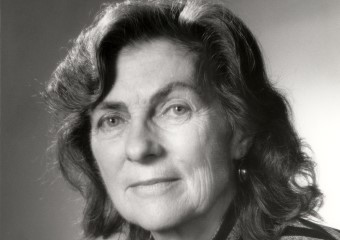
Portrait of Dame Anne McLaren by Godfrey Argent, 1991 ©Godfrey Argent Studio
An exceptional scientist, Anne McLaren made fundamental advances in genetics which paved the way for the development of in vitro fertilisation. Her groundbreaking work led to the birth of the first test-tube baby.
She was the daughter of a wealthy family of industrialists and was awarded a scholarship to read Zoology at Oxford, where she studied the genetics of rabbits. As a researcher in London she worked with mice, studying the effects of super ovulation on fertility. Working with John Biggers, she produced the first litter of mice grown from eggs that had developed in tissue culture and then been transferred to a surrogate mother, paving the way for embryo transfer in human IVF. She worked at the Institute of Animal Genetics in Edinburgh for 15 years, before returning to London as Director of the MRC Mammalian Development Unit, developing projects on reproductive immunology, contraception and chimeras. Aside from her scientific achievements, she was committed to negotiating the ethical and legal implications of genetics research. She encouraged honest discussion and believed science needed to engage the public to gain its trust. Later, at the Gurdon Institute, she continued research on stem cells.
She became the first female Officer of the Royal Society in 331 years, when she was appointed as Foreign Secretary between 1991-1996, and travelled widely, becoming a role model for women in science. She was also a research fellow at King's College, Cambridge. Dame Anne spent the next 15 years at the Institute of Animal Genetics in Edinburgh, where she continued researching the reproduction, growth and genetics of mice.Her greatest achievement came in 1958, with the first successful delivery of mice that had grown as embryos outside the mother’s womb. This groundbreaking work paved the way for the world’s first test-tube baby in 1978. In the 1960s and 70s, Dame Anne was involved in pioneering research into immuno-contraception, DNA hybridization and chimeras. From 1974, she was director of the MRC Mammalian Development Unit at UCL until her retirement in 1992.
